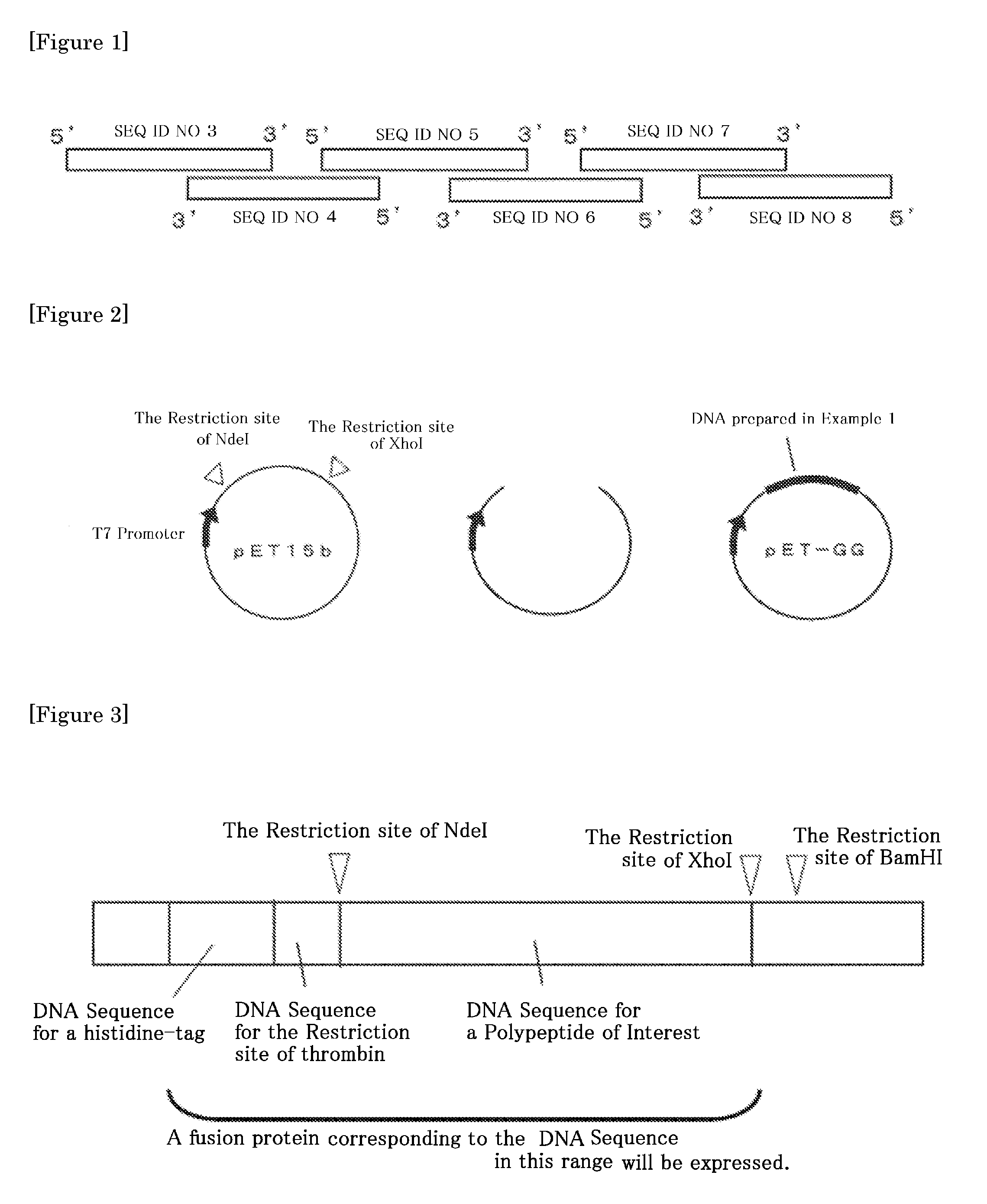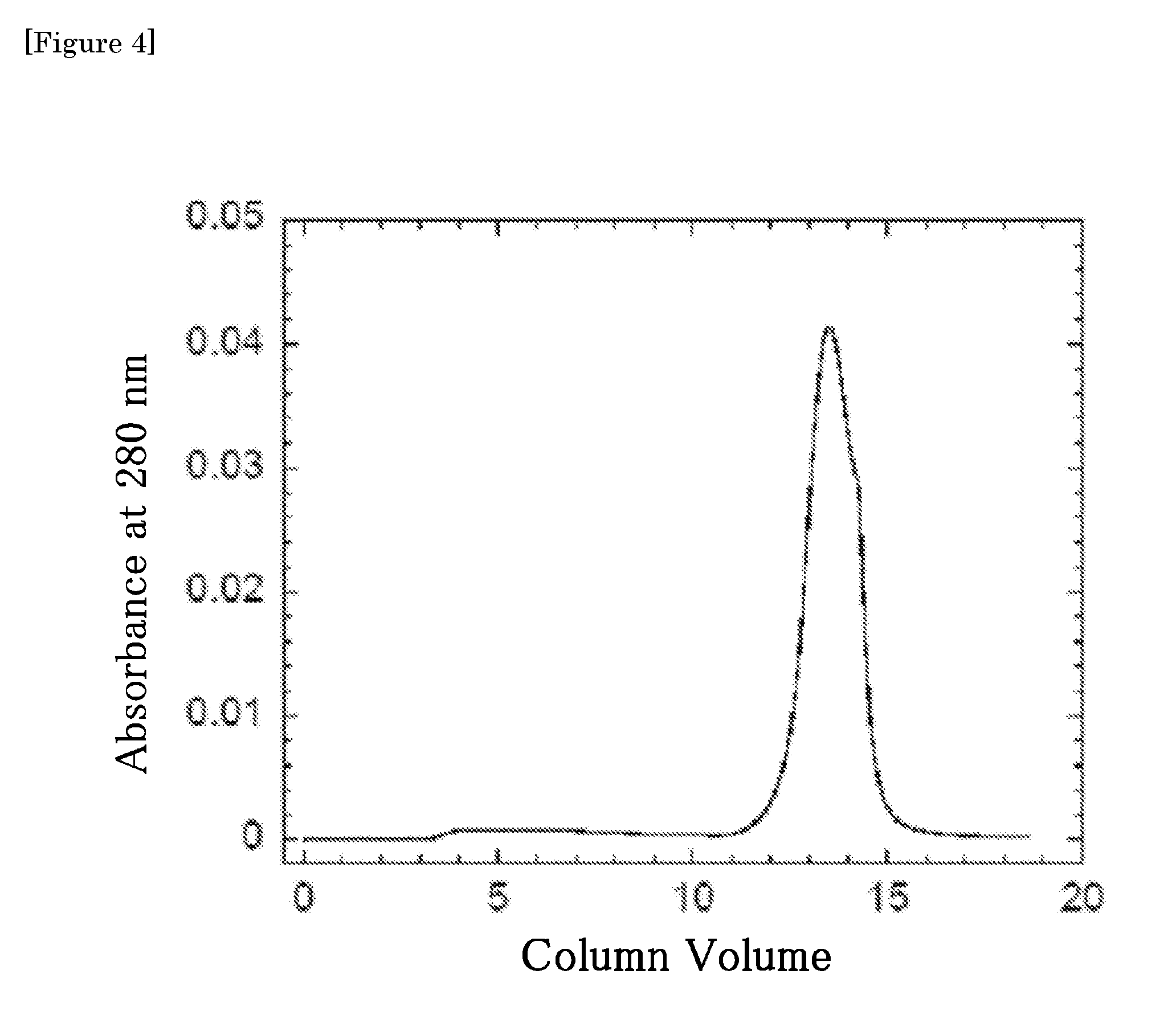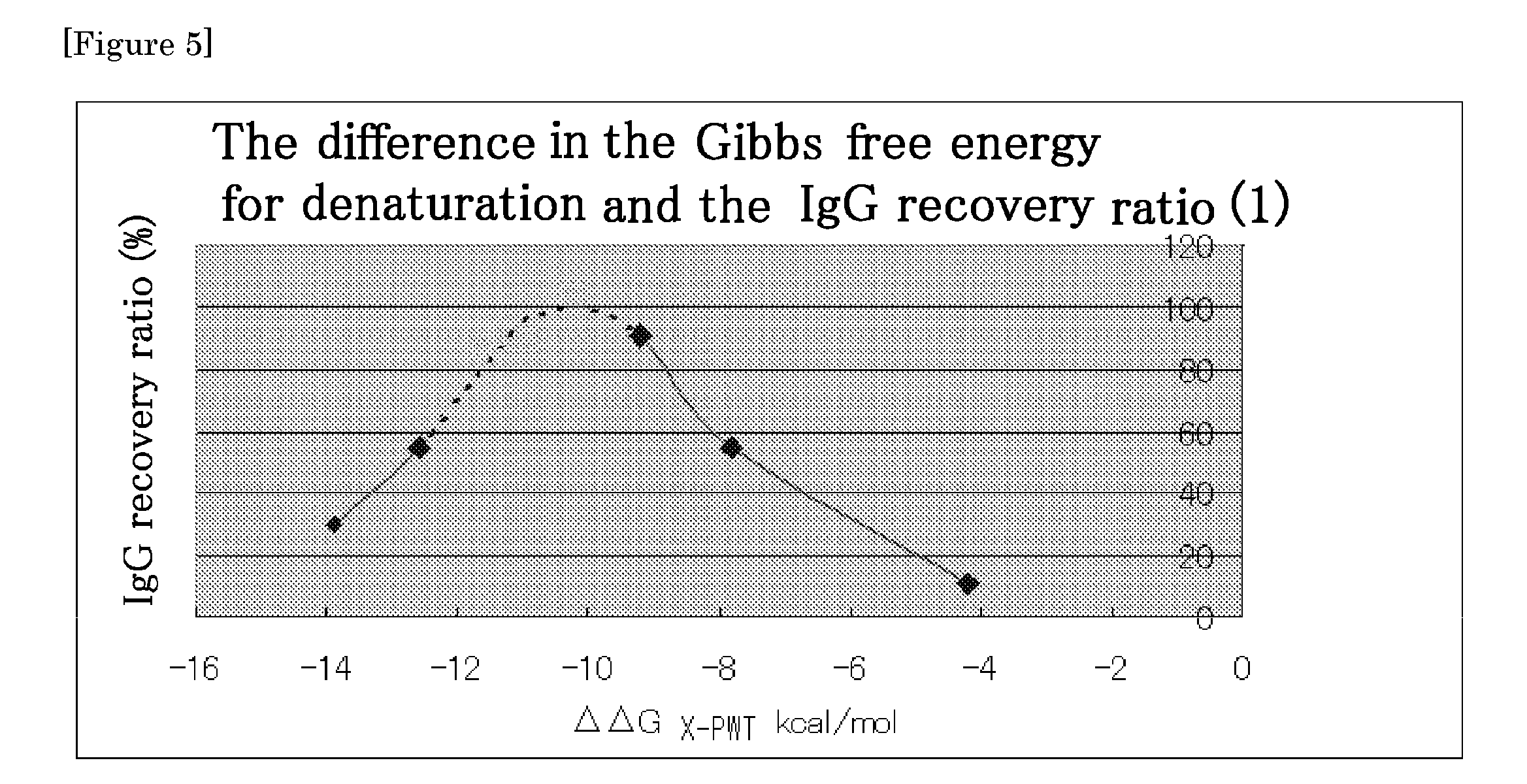Novel polypeptide, an affinity chromatography material, and a method for separating and/or purifying immunoglobulin
- Summary
- Abstract
- Description
- Claims
- Application Information
AI Technical Summary
Benefits of technology
Problems solved by technology
Method used
Image
Examples
example 1
A Polypeptide of the Present Invention Based on B Domain
Preparation of DNA for a Polypeptide of the Present Invention
[0196]FIG. 1 shows the procedure for constructing a full length double stranded DNA corresponding to an amino acid sequence for a mutant of the immunoglobulin binding B domain of the present invention.
[0197]The DNA sequence corresponding to the amino acid sequence of “a polypeptide of the present invention (SEQ ID NO 9)” where Leu at position 19 and position 22 in B domain (SEQ ID NO 1) were each replaced with Gly, and Gly at position 29 in B domain was replaced with Ala, which was optimized for expression in E. Coli hosts, was partly synthesized into the separate oligonucleotides of SEQ ID NOs 3 to 8 shown in Table 1 below. Oligonucleotide SEQ ID NOs 3, 5, and 7 encode a sense side of the DNA sequence, and Oligonucleotide SEQ ID NOs 4, 6, and 8 encode an antisense side of the DNA sequence.
TABLE 1SEQ ID NODNA SEQUENCESEQ ID NO 3SEQ ID NO 4SEQ ID NO 5SEQ ID NO 6SEQ ID ...
example 2
“2GG Containing Polypeptide”
[0206]Production of a fusion polypeptide in which two polypeptides are connected can be performed in the following manner.
A Plasmid which Produces a Fusion Polypeptide in which Two Polypeptides are Connected
[0207]In order to produce a “2GG containing polypeptide” of the present invention, an additional gene for a polypeptide of the present invention is introduced into the plasmid of Example 1 capable to produce “GG.”
[0208]The DNA sequence of the polypeptide prepared in Example 1 was designed so that the N terminus side may serve as a recognition site of NdeI and the C-terminus side may serve as a recognition site of XhoI, while the recognition site of BamHI is located downstream of the recognition site of XhoI in pET-GG. Therefore, pET-GG is digested with XhoI and BamHI, while the additional DNA sequence of the polypeptide to be introduced is re-designed so that the N-terminus side may serve as a recognition site of XhoI and the C-terminus side may serve ...
example 3
“3GG Containing Polypeptide”
[0210]Preparation of a fusion polypeptide containing 3 polypeptides can be easily performed as described below.
[0211]The recognition site of XhoI between the two polypeptide genes in pET-2GG is treated by modifying the site using site directed mutagenesis so that the site may not be cut there. The “2GG containing polypeptide” gene is amplified by the standard PCR method using primers which are designed so that the N terminus side may serve as a recognition site of XhoI and the C-terminus side may serve as a recognition site of BamHI. It is inserted into pET-GG digested with XhoI and BamHI. The resulting plasmid is pET-3GG, and a fusion polypeptide to be expressed will be in the form of His tag-thrombin recognition site-polypeptide-polypeptide-polypeptide.
PUM
| Property | Measurement | Unit |
|---|---|---|
| Temperature | aaaaa | aaaaa |
| Temperature | aaaaa | aaaaa |
| Temperature | aaaaa | aaaaa |
Abstract
Description
Claims
Application Information
 Login to View More
Login to View More - R&D
- Intellectual Property
- Life Sciences
- Materials
- Tech Scout
- Unparalleled Data Quality
- Higher Quality Content
- 60% Fewer Hallucinations
Browse by: Latest US Patents, China's latest patents, Technical Efficacy Thesaurus, Application Domain, Technology Topic, Popular Technical Reports.
© 2025 PatSnap. All rights reserved.Legal|Privacy policy|Modern Slavery Act Transparency Statement|Sitemap|About US| Contact US: help@patsnap.com



